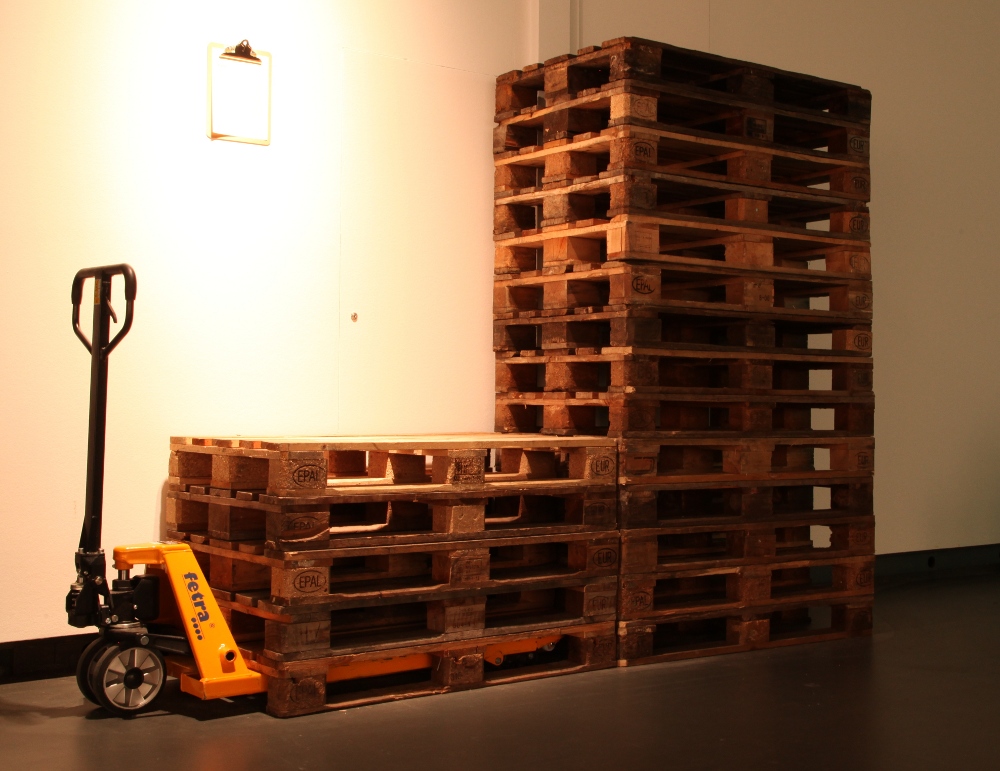Yuk Hui, Andreas Broeckmann (eds.): 30 Years After Les Immatériaux: Art, Science and Theory (2015)
Filed under book | Tags: · art, art history, art theory, communication technology, media, postmodernity, technology

“In 1985, the French philosopher Jean-François Lyotard curated a groundbreaking exhibition called Les Immatériaux at the Centre Pompidou in Paris. The exhibition showed how telecommunication technologies were beginning to impact every aspect of life. At the same time, it was a material demonstration of what Lyotard called the post-modern condition.
This book features a previously unpublished report by Jean-François Lyotard on the conception of Les Immatériaux and its relation to postmodernity. Reviewing the historical significance of the exhibition, his text is accompanied by twelve contemporary meditations. The philosophers, art historians, and artists analyse this important moment in the history of media and theory, and reflect on the new material conditions brought about by digital technologies in the last 30 years.”
Texts by Daniel Birnbaum, Jean-Louis Boissier, Andreas Broeckmann, Thierry Dufrêne, Francesca Gallo, Charlie Gere, Antony Hudek, Yuk Hui, Jean-François Lyotard, Robin Mackay, Anne Elisabeth Sejten, Bernard Stiegler, and Sven-Olov Wallenstein.
Publisher meson press, Lüneburg, Jun 2015
Creative Commons BY-SA 4.0 License
ISBN 9783957960313
245 pages
Reviews: Ellef Prestsæter (Kunstkritikk, 2015), Neural (2016), Michela Alessandrini (Critique d’art, 2017, FR).
Comment (0)Bernhard Siegert: Cultural Techniques: Grids, Filters, Doors, and Other Articulations of the Real (2015)
Filed under book | Tags: · art, cartography, cultural techniques, cybernetics, information, information theory, machine, media, media theory, ontology, painting, perspective, representation, technology

“In a crucial shift within posthumanistic media studies, Bernhard Siegert dissolves the concept of media into a network of operations that reproduce, displace, process, and reflect the distinctions fundamental for a given culture. Cultural Techniques aims to forget our traditional understanding of media so as to redefine the concept through something more fundamental than the empiricist study of a medium’s individual or collective uses or of its cultural semantics or aesthetics. Rather, Siegert seeks to relocate media and culture on a level where the distinctions between object and performance, matter and form, human and nonhuman, sign and channel, the symbolic and the real are still in the process of becoming. The result is to turn ontology into a domain of all that is meant in German by the word Kultur.
Cultural techniques comprise not only self-referential symbolic practices like reading, writing, counting, or image-making. The analysis of artifacts as cultural techniques emphasizes their ontological status as “in-betweens,” shifting from first-order to second-order techniques, from the technical to the artistic, from object to sign, from the natural to the cultural, from the operational to the representational.
Cultural Techniques ranges from seafaring, drafting, and eating to the production of the sign-signal distinction in old and new media, to the reproduction of anthropological difference, to the study of trompe-l’oeils, grids, registers, and doors. Throughout, Siegert addresses fundamental questions of how ontological distinctions can be replaced by chains of operations that process those alleged ontological distinctions within the ontic.
Grounding posthumanist theory both historically and technically, this book opens up a crucial dialogue between new German media theory and American postcybernetic discourses.”
Translated by Geoffrey Winthrop-Young
Publisher Fordham University Press, New York, 2015
Meaning Systems series
ISBN 0823263762, 9780823263769
xiv+265 pages
Reviews: Geoghegan (Paragraph, 2014), Young (New Media & Society, 2015).
Commentary: Martin (Grey Room, 2016).
PDF (8 MB, updated on 2020-1-1)
Comments (4)YoHa, et al.: Evil Media Distribution Centre (2013)
Filed under catalogue, online resource | Tags: · algorithm, art, boredom, bureaucracy, data, database, diagram, drugs, governance, information, media, power, software, theory

“Evil Media Distribution Centre is a response to the book Evil Media (2012) by Matthew Fuller and Andrew Goffey. In that book the authors argue for a broader notion of media and a deeper, more complex understanding of how these grey media influence the way we behave, think and perceive.
‘Grey media’ produce the working environment of administrators, professionals, delivery operatives and arranges the movements and work-arounds of everyone from chief executives to intellectuals or cleaners. They are the background to contemporary society. Using them, getting round their failures, exploiting their specific qualities, forms part of the necessary knowledge of the present day. These things mediate, transform, encode, filter and translate relations. Fuller and Goffey include a broad definition of media to include things like middle management, neurotropic or suppressant drugs that treat the body as an information system, alongside things such as queuing systems or specific algorithms or data–structures.
Assisted by Transmediale, Tom Keene, Anna Blumenkranz and other members of the Open Systems Association, YoHa (Graham Harwood & Matsuko Yokokoji) had invited people to write a text of one hundred words about an object, its genealogy, any key factors that make it amenable to manipulation. This text was then presented together with the object in a cabinet of curiosities that at the same time evoked associations with a distribution centre. A key fact of grey media is its ready quality of dryness, one bordering temptingly on boredom and this is something we asked people to maintain when writing the text.
The project has been installed at Transmediale 2013 in Berlin and The Netherlands Architecture Institute in Rotterdam.” (from YoHa’s statement)
Review: Stephen Fortune (2013).
28 contributions presented in video
All 51 contributions presented in text (use menu on the left)

